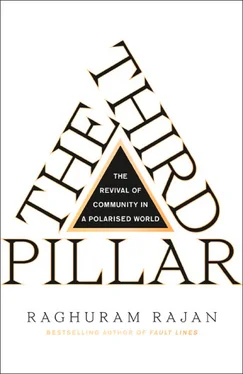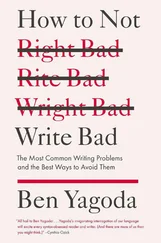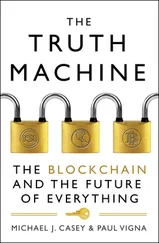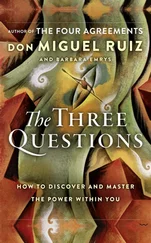CONCLUSION
Although communities can be supportive, they are effective in special circumstances. Either community members are socialised to be concerned about the greater utility of the community and its members relative to their own – typically true of groups that grow up together or are ethnically homogenous – or the community needs some surplus value (what economists term ‘rents’) embedded in relationships for members to find cooperation worthwhile. As we saw with banking relationships, arguably the most important problem the community faces is the centrifugal pull of the outside on community members – the competition that emanates from the outside world erodes rents within the community. Ideally, the community would offset that centrifugal pull by the centripetal attraction of the warmth of its relationships and the noncontractual support it provides. Indeed, the point of inclusive localism, as we will see, is to create enough benefits through proximity that the community can afford to be inclusive. Nevertheless, the human desire to protect its valuable relationships and to create new ones by limiting competition and the pull of the outside, will be a recurrent theme throughout the book.
PART I
HOW THE PILLARS EMERGED
There are ninety and nine who live and die
In want and hunger and cold
That one may live in luxury
And be wrapped in a silken fold
The ninety and nine in hovels bare
The one in a palace with riches rare…
And the one owns cities, and houses and lands,
And the ninety nine have empty hands.
PUBLISHED IN THE FARMERS’ ALLIANCE, JULY 31, 1889, AT THE TIME OF THE POPULIST REVOLT IN THE UNITED STATES
In the Introduction, we explored some of the benefits of the community, the third pillar in our narrative, and also saw some of its downsides. In the next four chapters, we go back in history to trace how the three pillars we see today emerged from the original single pillar, the community. We will see the functions of each pillar and the interrelationships between them when society was, arguably, simpler. This will help us understand our current challenges as we recognise in today’s problems echoes from history. Also, we will see that pillars waxed and waned in strength through history, creating disequilibria. Society eventually adapted to restore balance. As we face another period of disequilibrium today, history should give us some confidence that we will find answers.
We start in Chapter 1with the archetypal medieval community, the European feudal manor. The most valuable asset at that time, land, was rarely sold, since it was tied to a family or clan rather than an individual, and land rights were based on customs that involved feudal rights and obligations rather than explicit ownership. Goods were largely exchanged within the manor. The lord of the manor governed the community, adjudicating disputes and meting out justice. Thus, for all practical purposes, the community also contained the other two pillars. We use the quintessential market transaction, debt, as a focal point, and trace how both the state and markets separated from the feudal community over time. We will also follow changing public and scholarly attitudes towards business and markets, and see they have not been static. Instead, they often mirrored the economic and political necessities of the time, as they do today.
With the rise of the nation state, the state pillar was in ascendance. We turn in Chapter 2to the emerging nation-state in England, and see how competitive markets helped England solve a fundamental conundrum – how the state can obtain a monopoly of military power within the country, and yet give up its powers to act arbitrarily and outside the law. This is essential for markets to be confident that private property is protected. We will see the importance of an efficient commercially-minded gentry as well as independent businesspersons in aggregating power through Parliament and imposing constitutional checks on the monarchy. Once the state was constitutionally limited, the way was open for truly competitive markets – individuals no longer needed the anti-competitive feudal structures such as guilds that also served to protect them against the state. At the same time, both widely-held private property as well as competitive markets were necessary to create an independent private sector that could protect property and constrain the state. In sum, the constitutionally limited state freed markets and free markets limited the state.
Once the markets were free of the fear of expropriation by the state, they flourished. As we will see in Chapter 3, the market pillar was dominant as countries experienced the First Industrial Revolution but often to the detriment of the community. The fight for broader suffrage was, in many ways, a fight by the community for more democratic power, this time to protect labour, not just physical property. The empowered community then, through movements like those of the Populists and the Progressives in the United States around the turn of the nineteenth century, played its role in restoring the balance by pressing the state to keep markets competitive and opportunity alive for the many.
The democratic community may not always want markets. In Chapter 4, we will outline three situations when the community does not push for competitive markets – when market players or practices are deemed illegitimate and the state seems a better alternative, when the state is weak and the community is easily bribed to stay apathetic, and when neither the state nor the community offer people the capabilities and the support they need to participate in volatile, changing markets. For people to desire markets, an effective state together with an engaged community have to create mechanisms that will provide people the capabilities and support that will allow them to benefit from markets. We will see how the balance came together in the liberal market democracies that emerged across the developed world by the early twentieth century. We will cover a thousand years of the evolution of the pillars in four chapters – a little too fast for the historians, but just right for our purpose, which is to give a sense of what problems they solved.
History’s lessons are important. They will give us a sense of why each pillar matters and how the pillars fit together to produce the liberal market economy. Patterns of their interaction reproduce, not exactly but recognisably. Nevertheless, readers who want to jump ahead to recent times might skim through Part I and go to Part II, where we move quickly through the post World War II–era to explain the genesis of today’s problems. They could then come back to Part I for a historical perspective.
In this chapter, we will see how the markets and the state separated from the medieval manor community and became powerful pillars in their own right. We will follow these developments through the use of the quintessential market contract: debt. The Catholic Church will play a cameo role in this story, initially filling the vacuum left by the absence of a strong state, then competing with the state to both protect and exploit people. Crucially, though, for our narrative, the Church managed to stand up to the state, armed only with the power of religion. It established the idea that there was a higher legitimacy that constrained state actions, over and above temporal power. As we will see, this was an important step toward a constitutionally limited state, which in turn was necessary for markets to have full play.
THE DEBT CONTRACT
Unlike the favours we have been discussing between members of a community, a loan contract is an explicit commitment by a borrower to repay the loaned amount with interest at a prespecified time, failing which the lender will be able to use the force of the law to recover the value lent. Typically, she will do so by seizing pledged collateral. If the security offered by the borrower is valuable – such as a farmer borrowing against his land – the lender need not know very much about the borrower or monitor his activity closely. By making terms explicit, the debt contract frees the lender from dependence on the whims or fortunes of the borrower. No longer is it the borrower’s choice whether to repay and when to do so – he must pay on the contract’s maturity or face the stipulated penalties, which in some societies were as harsh as slavery or death. Since the debt contract is written down, it is not dependent on the frailty of human or community memory. Favours can be forgotten – debt cannot.
Читать дальше












